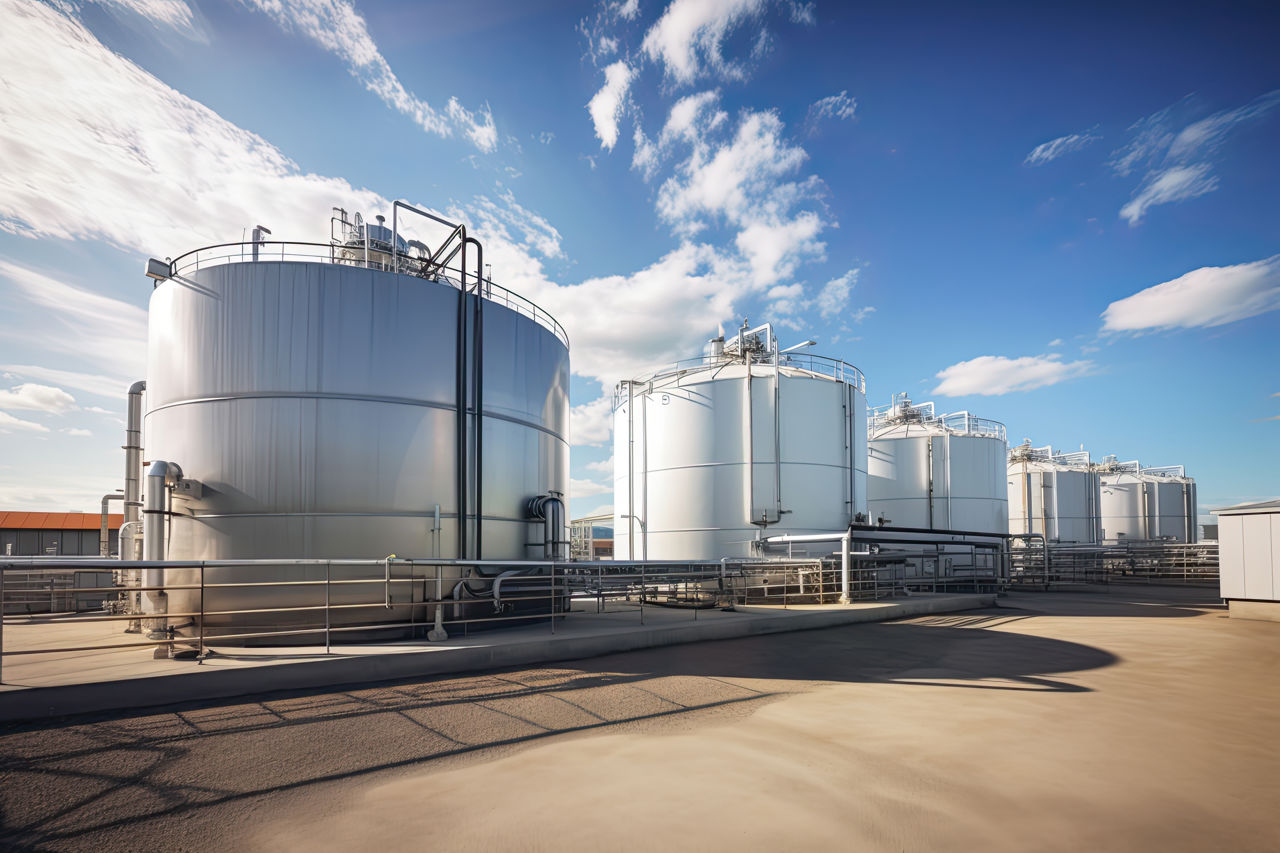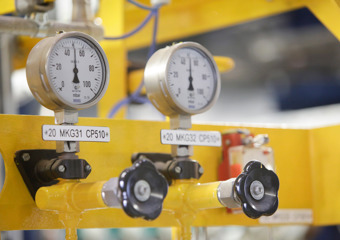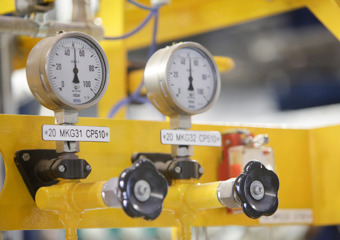
Industrial Infrastructure - AI Generated Source: Vecteezy.com
Industry in particular is waiting for clarity on hydrogen
On 16 January, the House of Representatives will hold a committee debate on hydrogen. This debate comes at a crucial time. The development of electrolysers must start this year at the latest, in order to meet the EU targets for 2030 and to protect industry from highCO2 costs. Minister Hermans will have to make clear choices for this. For too long, successive cabinets have been beating around the bush.
High ambitions
The countries in the European Union definitively adopted the Renewable Energy Directive III in October 2023. According to this directive, Member States are obliged to ensure that by 2030 at least 42% of the hydrogen used industrially is produced 'green': made from water via electrolysis, with electricity from renewable sources solar, wind or hydropower. Furthermore, there is a target of 1% for the transport sector and an obligation of 1.2% for aviation to use these 'renewable fuels of non-biological origin' by 2030 – read: green hydrogen.
After Germany, the Netherlands has the largest hydrogen use in the EU; partly due to the large refining and fertilizer industry. In the Netherlands, these EU targets therefore represent a gigantic task. Achieving the above targets requires 29 PJ of green hydrogen by 2030, especially for industrial demand. To produce this, 15 TWh of electricity from the sun and especially wind is needed. This is an amount comparable to 10% of the current annual demand for electricity; about the production of 300 very large wind turbines at sea. And 3 to 4 GW of capacity for electrolysis and transport capacity to bring this hydrogen to (fertilizer) industries and refineries. All this must therefore be developed within 5 years, because at the moment there is virtually no production of green hydrogen in our country.
More expensive hydrogen
Green hydrogen will still be very expensive in the coming years: more than 13 euros per kg, according to TNO calculations in May 2024; more than 10 euros more than the grey fossil equivalent. These higher costs are partly due to the rapidly rising network tariffs for electricity. The use of the required 29 PJ of green hydrogen per year amounts to about 242 million kg of hydrogen. At an additional cost of 10 euros per kg, this means a bill of 2.4 billion euros per year. It is impossible for today's industries to bear these additional costs. A contribution from the central government of this order is also not foreseen.
For many industries, hydrogen is a promising way to become more sustainable, but the uncertainty about a potentially very expensive obligation for (partly) own account is now deterring companies. With this uncertain market, parties are not likely to invest in electrolysers.
Ailing policy
The previous cabinet had the ambition to achieve these above-mentioned goals. It set the 4 GW electrolysis capacity as an ambition for 2030 with continued growth thereafter. That cabinet reserved no less than 7 billion euros in subsidies for electrolysis in the Climate Fund. Unfortunately, with the fall of the cabinet last summer, it was not yet clear how the cabinet would shape the obligation for green hydrogen in industry. A bill for an annual obligation for industrial users of hydrogen is under development, but this proposal does not provide clarity as to who will bear the higher costs of green hydrogen and suggests substantial additional costs for industry. In any case, the actual acceptance of this law is still very uncertain. In the meantime, everyone is waiting. It is, of course, decisive for the industry whether this Member State obligation is imposed on individual companies without full coverage of the additional costs, or whether the additional costs are fully compensated through subsidies. A third possibility is that the Netherlands chooses not to meet part of the EU target for the time being, without consequences for the industries.
The new cabinet is also beating around the bush and has still not made it clear how it wants to deal with the EU goals on hydrogen. With the outline agreement, a billion euros have been cut in the resources for hydrogen. The latest letter to Parliament of 10 December 2024 already suggests that it will 'become more difficult' to achieve the ambition of 4 GW.

Green Hydrogen Renewable Energy Production Facility - Source: Vecteezy.com
High costs due to slow sustainability of electricity
In 2023, the European Commission adopted two so-called 'delegated acts' that determine when hydrogen - Renewable Fuels of Non-Biological Origin (RFNBO) - can be called 'green' and can count towards the above goals. The most important rule is that hydrogen is sufficient if the electricity in a country is produced to a very large extent renewable (90%) orCO2-free (18 grams of CO2 / MJ). Many countries in the EU will comply with this in the coming years, but not the Netherlands. Partly due to new strict rules on solar and wind farms and delays around offshore wind, the roll-out is slower than previously expected, PBL recently calculated. As a result, the production of green (RFNBO) hydrogen in the Netherlands is subject to complex requirements that drive up costs, such as a time correlation with the production of electricity from sun and wind, which means that electrolysers have to stand still for thousands of hours a year. The slow sustainability of electricity production is therefore driving up the price of Dutch green hydrogen, with adverse consequences for our industry.
Blue hydrogen: a cheaper but dead end
Meanwhile, a much cheaper alternative is hanging over the market: blue or so-called 'low-carbon' hydrogen. This is hydrogen made from natural gas or fossil residual gases, whereby only part of the releasedCO2 emissions are captured and stored. The above-mentioned Letter to Parliament calls this route a 'fast and affordable sustainability of industry and the electricity sector'. This is seen as a promising route, especially for hydrogen power plants in the electricity sector. Moreover, this sector is not covered by the above-mentioned blending obligation for green hydrogen. Blue hydrogen is heavily subsidized: the SDE++ covers the additional costs and the national government takes the 'flooding risks' of the CO2 infrastructure, as was evident from answers to previous parliamentary questions.
The consequence of the support for cheaper blue hydrogen is that market parties are becoming even more reluctant to invest in electrolysis capacity for truly renewable, green, but now even more expensive hydrogen. If this blue hydrogen were truly carbon-free or low-carbon, then this would not be a problem. However, the reality is different. The subsidies for the capture and storage ofCO2 apply to the Steam Methane Reforming process with only 65% capture; the rest goes to the atmosphere. This is not all: a very large part of the gas for hydrogen comes from shale gas fields in the US. The methane losses that occur during this extraction are enormous. Methane is a more harmful greenhouse gas that warms the atmosphere dozens of times more thanCO2. Although importers of hydrogen, for example, have to pay for the emissions that took place outside the EU during production - the Carbon Border Adjustment Mechanism - methane emissions are not included in this. Subsidized blue hydrogen is therefore only low-carbon on paper. At the same time, it is pushing carbon-free and renewablely produced green hydrogen out of the market.
Around 2040, industry in Europe will have to operateCO2-free. With blue hydrogen, this point will never be reached for the companies. It is therefore a short-lived attractive, but ultimately dead end.
Clear policy for green hydrogen needed
What is needed now is mainly clarity for market parties so that industries are willing to switch to green hydrogen and energy companies, among others, want to invest in electrolysis. This requires a number of things:
- Give industries an obligation for an increasing share of green hydrogen, but at the same time tempt these industrial companies by fully reimbursing the additional costs.
- It is better to opt for a lower ambition for 2030 than for an expensive, partly uncompensated obligation that will cause problems for industries or make them decide not to use hydrogen.
- Blue, so-called 'low-carbon' hydrogen is not a logical intermediate step, but an obstacle to green and trulyCO2-free hydrogen. Let companies pay most of the additional costs themselves, as an option to avoid theirCO2 costs.
- Electrolysers can limit grid congestion in an area by reducing peaks of wind and solar power at the right time and in the right place. Value this with low grid tariffs, according to the results of a recent study by CE-Delft.
- Develop virtuallyCO2-free electricity production as soon as possible. Then hydrogen made from electricity is always green (RFNBO) according to EU rules and is therefore cheaper to produce. With less strict rules on solar and wind farms, this will certainly be possible around 2030.
The role of green hydrogen in making the energy supply more sustainable is therefore major and ultimately crucial. It is now important for the government to offer positive and, above all, clear policy to get the market going and to gain confidence among investors.
Want to read more about green hydrogen?

Hydrogen in its infancy or with big steps forward?
Hydrogen is causing a lot of controversy. You have optimists, skeptics and you have Statkraft that will do it. Still without clear government support or fully hedged risks. It is clear: anyone who...
Read more

Statkraft explores production of 15,000 tonnes of green hydrogen at Port of Den Helder
Norwegian energy producer Statkraft will investigate the development of an electrolyser in the Port of Den Helder for the green hydrogen project 'Zephyros'. Statkraft's first electrolyser in the Ne...
Read more

Green Hydrogen Electrolyser Zephyros
The Zephyros green hydrogen project is being developed in the Port of Den Helder as part of the Green Shipping Wadden Sea Programme. The planned electrolyser will initially produce 6 MW, after which i...
Read more

Van grijs naar groen: een nieuwe waterstofmarkt
Groene waterstof als de duurzame brandstof van morgen. Iedereen praat erover, maar je ziet er nog weinig van terug als je in Nederland rondkijkt. Toch is het wel degelijk de bedoeling dat ook ons land...
Read more